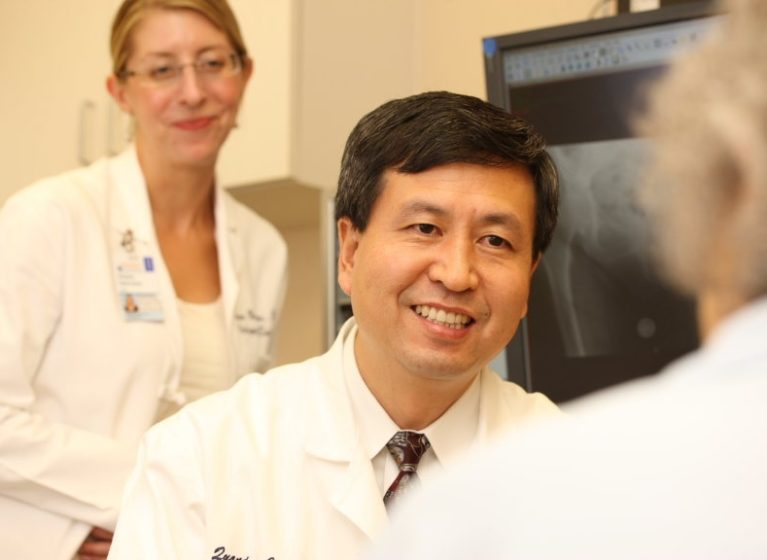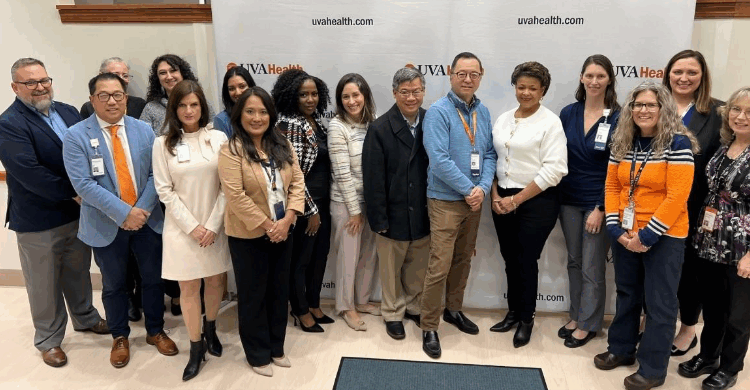
Millions of Americans each year suffer broken bones, and a majority recover without complications. But as many as one in five bone fracture patients face prolonged and complicated treatments such as bone grafts, synthetic bone replacement and multiple surgeries – all resulting in risk of infection.
With the help of a $100,000 grant from the Orthopaedic Research and Education Foundation, UVA Health System researchers, led by Quanjun Cui, MD, assistant professor of orthopaedic surgery, are developing innovative ways to overcome these problems by harnessing the body’s own regenerative powers to restore lost bone by combining gene therapy and adult stem cell therapy.
In cases where a large portion of the bone is significantly damaged, the bone must be replaced by either a synthetic bone substitute or by donated bone. Both options carry risks and downsides for patients. Synthetic materials may fail over time. Donated bone, or allografts, offers certain structural and practical advantages over substitute materials, but put the patient at risk of infection.
Bone grafts in which healthy bone from one area of the patient’s body is taken to fill in the fracture may also be used. Patients face risks when they undergo surgery to remove bone from one area to graft to the fracture, and the amount of bone graft that can be taken from the patient is limited, says Cui, who also serves as UVA’s medical director of the orthopaedics and trauma unit.
As Cui explains, the healing process for bones requires nutrients called growth factors that spur bone growth. Healing also requires the blood vessels through which these growth factors are delivered. “For complex fractures to heal, bone growth must be paired with vessel growth,” Cui says.
While orthopaedic specialists have developed several different tactics to help bones heal or to develop bone graft substitutes, Cui’s research utilizes a biodegradable polymer scaffold that is coated with stem cells, a method developed by UVA colleagues. The adult stem cells are mesenchymal stem cells, found in bone marrow that have the ability to generate bone, cartilage, fat cells, tendon and ligaments, muscles cells, skin cells and nerve cells. In recent years, researchers have learned how to guide the cells through their development so that they produce bone.
Cui wants to ensure that the stem cells have the best tools on hand to be master bone builders, so he genetically modifies them to produce the specific proteins needed for bone and vessel growth. He is screening a number of candidates to determine which genes best promote the bone healing process, known as the bone morphogenic protein genes, and to determine which ones promote the growth of blood vessels.
“You really need to have genes that promote both bone growth as well as vessel formation,” Cui says. “That’s why we’re trying to create an environment where you start with the vessel to supply the nutrient to form the new bone. If you don’t have blood supply to the damaged bone, the bone won’t heal. All new bone formation starts with blood vessels to bring nutrients.”
Cui’s dual approach to the problem has shown promising results in rodents. When gene therapy is combined with the stem cell-seeded scaffold, it has produced greater bone volume and increased vessel formation, speeding the healing process, he says. The latest results from Cui‘s research were published last spring in the journal Growth Factors .
Eventually, when a patient who suffers broken bones in a car accident comes to the hospital, Cui hopes that orthopaedic surgeons will have stem cell-based gene therapy kits on hand, much as hospitals keep donated blood available.
“We want to have them ready for the patient who comes into the operating room after a traffic accident, or a fall from a deer stand,” Cui says. “That will be the ideal. That’s our dream.”


